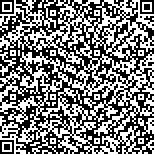| 摘要: |
| 目的 文章测度不同地区化肥施用的动态环境安全阈值,明确各地区化肥施用的环境容量边界和减施空间,科学评估不同区域化肥施用的环境风险。方法 鉴于不同类型作物对各单质肥的吸收量有着较大差异,选择总种植面积占比最大的5类大宗作物为研究对象,通过对1980—2021年31个省市区5类大宗作物的实际产量进行模拟回归分析,得出其趋势产量;根据各大类作物对养分的需求量以及种植面积的权重,分别对各地区氮、磷、钾及总施肥的环境安全阈值进行测算;以此作为分析基础,计算出各地区化肥减施空间和化肥环境风险指数。结果 (1)化肥施用安全阈值并非一个静态标准值,同一时期不同类型作物安全阈值差别很大,同类型作物不同时期安全阈值呈现动态变化,同一时期同类作物不同区域安全阈值存在差异。(2)对比各地区安全阈值与化肥实际施用强度,发现氮、磷、钾单质肥及总化肥用量空间上表现出施用过量与施用不足并存的现象,各地区化肥环境风险指数随时间推移呈现先上升后下降的变化趋势,且各地区出现拐点的时间不同。结论 需要通过建立和完善化肥施用数据库、确立差异化化肥减施方案、保持稳定合理种植结构、推广普及科学施肥技术、实施土壤健康卡评估办法等措施推进农业生产减施降排。 |
| 关键词: 动态安全阈值 减施空间 化肥 环境风险 时空演变 |
| DOI:10.7621/cjarrp.1005-9121.20250309 |
| 分类号:X592;F326.1 |
| 基金项目:国家社会科学基金一般项目“中国自然资源产品供给与使用表编制方法及应用研究”(22BTJ002);国家自然科学基金项目“农作物保险的环境治理效应研究:作用机理与提升路径”(71963023);兰州财经大学博士生科研创新项目“甘肃省化肥施用风险动态评价研究”(2023D18) |
|
| SPATIAL AND TEMPORAL VARIATION IN THE REDUCTION OF FERTILIZER APPLICATION AND ITS ENVIRONMENTAL RISK——BASED ON DYNAMIC ENVIRONMENTAL SAFETY THRESHOLD MEASUREMENT |
|
Shi Xiaoying1, Wang Yongyu1, Zhang Zongjun2, Zhao Jing1
|
|
1.School of Statistics and Data Science, Lanzhou University of Finance and Economics, Lanzhou 730020, Gansu, China;2.School of Finance, Lanzhou University of Finance and Economics, Lanzhou 730020, Gansu, China
|
| Abstract: |
| Assessing the dynamic environmental safety thresholds of fertilizer application in different regions, defining the environmental capacity boundaries and reduction spaces for fertilizer application, and scientifically evaluating the environmental risks of fertilizer application in different regions. Considering the significant differences in the absorption of various types of fertilizers by different crop types, the five categories of bulk crops with the largest proportion of total planting area were selected as the research objects. By simulating regression calculations of the actual yields of the five major crop categories in 31 provinces and cities from 1980 to 2021, their theoretical output values were obtained. Based on the nutrient requirements of each major crop category and the weighting of the planting area, the environmental safety thresholds for nitrogen, phosphorus, potassium, and total fertilization during the sample period were calculated, thus providing the basis for analyzing the reduction space for fertilizer application and the fertilizer environmental risk index in each region. The results were listed as follows. (1) The safety threshold for fertilizer application was not a static standard value. There was a significant difference in the safety threshold for different types of crops during the same period, and the safety threshold for the same type of crop showed dynamic changes over different periods. There were also regional variations in the safety threshold for the same type of crop during the same period. (2) Comparing the actual fertilizer application intensity with the safety thresholds in different regions, it was found that nitrogen, phosphorus, potassium, and total fertilizer application showed a phenomenon of both over-application and under-application. During the study period, the fertilizer environmental risk index in various regions showed a trend of initial increase followed by a decrease, and the time when each region reached a turning point varies. Therefore, measures to promote the reduction and control of fertilizer application in agricultural production include establishing and improving fertilizer application databases, establishing differentiated fertilizer reduction plans, maintaining stable and reasonable planting structures, continuously promoting the popularization of scientific fertilization techniques, and implementing soil health assessment methods. |
| Key words: dynamic safety thresholds reduction space fertilizer environmental risk spatiotemporal evolution |

